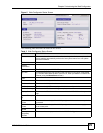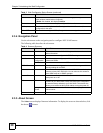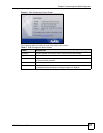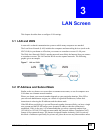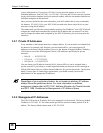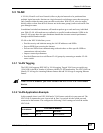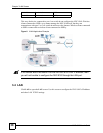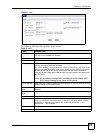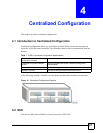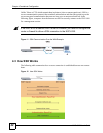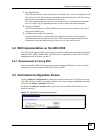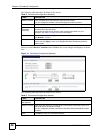
Chapter 3 LAN Screen
NXC-8160 User’s Guide
37
3.3 VLAN
A VLAN (Virtual Local Area Network) allows a physical network to be partitioned into
multiple logical networks. Stations on a logical network can belong to more than one group.
Only stations within the same group can talk to each other. With VLAN, a device cannot
directly talk to or hear from devices that are not in the same group(s) unless such traffic first
goes through a router.
In traditional switched environments, all broadcast packets go to each and every individual
port. With VLAN, all broadcasts are confined to a specific broadcast domain. SSIDs in the
same VLAN group share the same broadcast domain thus increase network performance
through reduced broadcast traffic.
VLAN on the NXC-8160 allows you to:
• Provide security and isolation among the LAN IP addresses and SSIDs.
• Stop an SSID from accessing the Internet.
• Prevent two SSIDs from communicating with each other or allow specific SSIDs to
communicate with each other.
• Improve network performance.
• Provide different services to different VLAN groups by connecting to another VLAN-
aware switch.
3.3.1 VLAN Tagging
The NXC-8160 supports IEEE 802.1q VLAN tagging. Tagged VLAN uses an explicit tag
(VLAN ID) in the MAC header of a frame to identify VLAN membership. The NXC-8160 can
identify VLAN tags for incoming Ethernet frames and add VLAN tags to outgoing Ethernet
frames.
" When VLAN is enabled, you must connect the NXC-8160 to a VLAN-aware
device.
3.3.2 VLAN Application Example
In this example, there is an NXC-8160 and a VLAN-aware switch A in your network. The
NXC-8160 is connected to port 4 on switch A. Port 5 on switch A is the uplink port and
connected to the Internet. You configure the following VLAN settings on switch A and the
NXC-8160.
VLAN GROUP
VLAN GROUP MEMBER
SWITCH A NXC-8160
VLAN 101 Port 1, 4 LAN IP Address



